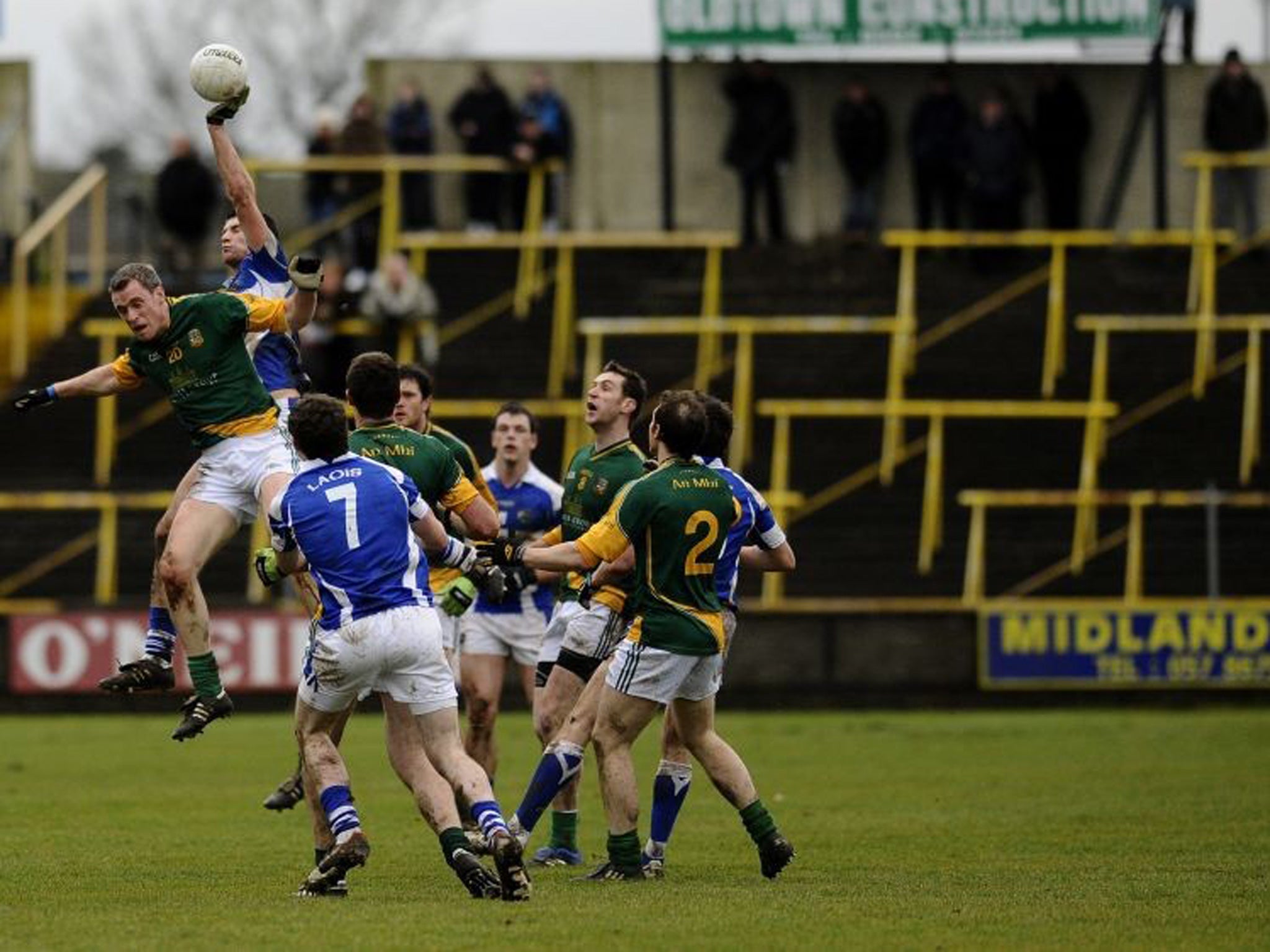A to Z of the Gaelic Games
Coming to a screen near you... traditional Irish sports may seem a little baffling at first. We’re here to help you know your sliotar from your Offaly

Sky Sports begin their first summer of Gaelic Athletic Association coverage this Saturday with the Leinster hurling championship quarter-final between Kilkenny and Offaly.
Sky Sports News presenter Rachel Wyse and former Irish rugby union star Brian Carney will be anchors for the 20 Gaelic football and hurling matches until the end of September. Here is your Independent on Sunday guide to Ireland’s traditional games:
A is for Amateur
The players get nothing more for their time than mileage and a hot meal after training. The only man on the pitch getting paid is the referee, and the measly fee is not worth the abuse.
B is for Black card
Introduced in Gaelic football this year to cut out cynical fouls – the culprit must be substituted – the new punishment has already been at the centre of controversy. Again, the referees are not paid enough.
C is for Cats
The nickname for the black-and-amber-striped Kilkenny hurlers. Of the last 10 All-Irelands they have won six. Think Manchester United in their pomp, with sticks.
D is for Dublin
Despite only winning two Gaelic football All-Ireland titles in 18 years, the reigning champions’ financial might and youth structure have provoked calls for the capital to be split in two.
E is for EGM
There’s only one thing the GAA loves more than bureaucracy and that’s an acronym. CCCC, DRA, CHC – the tradition and conservatism of cricket’s MCC, but with more ham sandwiches.
F is for Final
The All-Ireland hurling final is on the first Sunday of September, the football on the third – two days of the year you can be sure the 82,300-capacity Croke Park will be full.
G is for Goal
A goal is worth three points in both football and hurling but Gaels warn against greed. Hence the sage advice: “Take your points, the goals will come.”
H is for hurley
Or hurl, depending on where you’re from. The sticks are normally made from ash (but sometimes fibreglass – very fancy) and measure between 34 and 38 inches in length.
I is for Insurance
All players are covered through their clubs but injuries are not as common as one might think. Cruciate-ligament problems remain the most debilitating injury.
J is for Job
Amateur players need to earn a crust and teaching is a popular career due to the hours and holidays. Others stay in third-level education for as long as possible.
K is for ‘Kingdom’
Kerry, nickname “the Kingdom”, are the aristocrats of Gaelic football. They are rebuilding now, but even while they were winning five of their 36 titles in the last decade no-one suggested slicing the county in half.
L is for Line-Up
The 15 players ostensibly play in a 1-3-3-2-3-3 formation, with six backs, two midfielders and six forwards.
M is for Minor
The stars of tomorrow play in this under-18 age group, often to the detriment of their Leaving Cert (the equivalent of A Levels).
N is for negativity
This is the common trait among Irish television pundits on RTE. Will Sky mimic the market leaders or trust in their own, more forgiving, house style?
O is for O’Neills
Irish sportswear brand who make many counties’ jerseys and also the eponymous Gaelic football matchballs. An O’Neills is size five, like a football, but heavier.
P is for Province
Rugby union fans will know there are four of them – Connacht, Leinster, Munster and Ulster – and each stages a provincial football championship. But only Leinster and Munster stage hurling.
Q is for Qualifiers
Also known as the backdoor, this is the system that allows every team beaten in their provincial championship a second shot at glory. Before its introduction summers could be brutally brief.
R is for Rage
Anger can often seem like the soundtrack of the Gaelic summer. Referees, fixtures, ticket prices, referees, cynicism, referees, competition structure and inadequate bureaucracy are all popular targets.
S is for Sliotar
The ball used in hurling. It’s lighter and smaller than a cricket ball, with raised stitching and a taut leather surface. And it can leave a lasting mark on the back of the calf.
T is for Thurles
Location of Semple Stadium, the self-styled “home of hurling”. The GAA was formed in this Tipperary town back in 1884.
U is for Umpires
Unlike their technology-dependant cricket counterparts, these score adjudicators only have Hawk Eye in Croke Park. They wave a white flag for points and green for goals.
V is for Victory speech
A delightful anachronism. If your county or club wins a trophy the captain gets handed the mic. Dublin star Ger Brennan championed gay rights in a recent speech. It was unusual.
W is for Winners
One of maybe four counties – Kerry, Cork, Dublin, Mayo – in the football. Kilkenny, Tipperary or defending champions Clare would be a good bet for the hurling.
X is for Xenophile
Since making loads of money for opening up Croke Park to foreign sports like football and rugby, the GAA have become very welcoming. One Direction, Garth Brooks and the Penn State American football team will all perform there this year.
Y is for Yanks
New York are included in the Connacht football championship and host a game at Gaelic Park in the Bronx every year. They never win.
Z is for Zebo
The Ireland rugby international Simon Zebo is a former hurler and the likes of Rob Kearney, Sean O’Brien and Tommy Bowe all played football to a high level at Minor.
Subscribe to Independent Premium to bookmark this article
Want to bookmark your favourite articles and stories to read or reference later? Start your Independent Premium subscription today.

Join our commenting forum
Join thought-provoking conversations, follow other Independent readers and see their replies